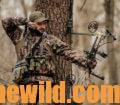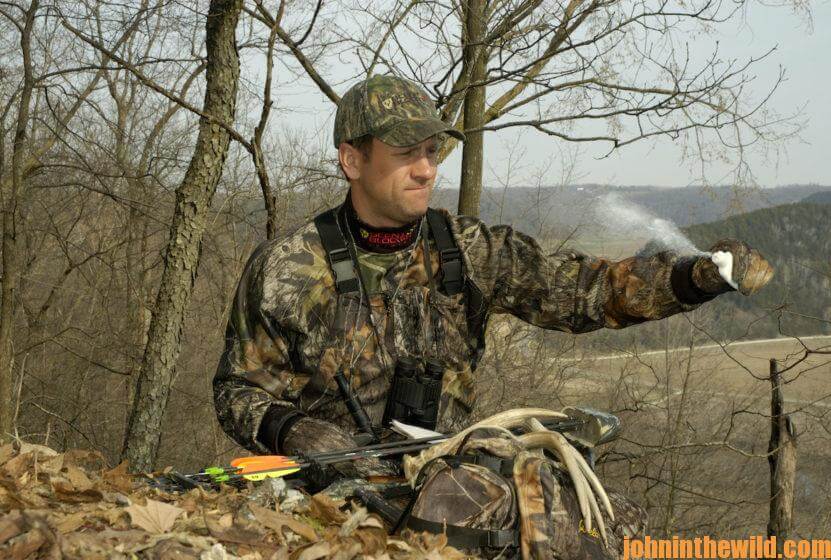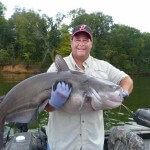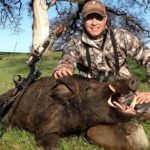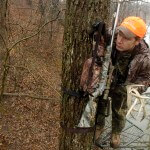Editor’s Note: Archery seasons are already open in some states and/or soon to open in mid-October in various states. My friend Bob Walker of Livingston, Alabama, has been hunting deer for about 50 years, guided for deer for 30 years and owns the R & J Deer-Processing business (205-652-7280) in Livingston Ala. in the heart of Alabama’s Black Belt. To learn more, visit (https://foodprocessing.cc/) and his Facebook page (https://www.facebook.com/).
 I really thought I could take a nice deer hunting a spot I’d picked out on the third afternoon of bow season one year. I got off from work and climbed into my tree stand. I hadn’t been there long before I started seeing deer in the distance. Then I heard a deer snort right behind me. I took out my wind checker. Immediately, I saw that the wind was swirling and changing directions. I had a steady wind in my face early in the afternoon, but after about an hour, the wind had died and changed directions. When I got in my stand, I had a solid northeast wind, but then after the wind died and picked back up again, the wind was coming from the west. That was the way I didn’t need for it to blow. Don’t forget that the weatherman isn’t always right, when he predicts the way the wind will blow in the areas for which he’s forecasting. Unless you get a weather prediction in my area that we’re going to have a north or northwest wind blowing 10 to 15 mph, more than likely, you’ll have changing wind conditions during the time you’re hunting. If you’re hunting a mature big buck, I don’t hunt that deer on a day with variable winds.
I really thought I could take a nice deer hunting a spot I’d picked out on the third afternoon of bow season one year. I got off from work and climbed into my tree stand. I hadn’t been there long before I started seeing deer in the distance. Then I heard a deer snort right behind me. I took out my wind checker. Immediately, I saw that the wind was swirling and changing directions. I had a steady wind in my face early in the afternoon, but after about an hour, the wind had died and changed directions. When I got in my stand, I had a solid northeast wind, but then after the wind died and picked back up again, the wind was coming from the west. That was the way I didn’t need for it to blow. Don’t forget that the weatherman isn’t always right, when he predicts the way the wind will blow in the areas for which he’s forecasting. Unless you get a weather prediction in my area that we’re going to have a north or northwest wind blowing 10 to 15 mph, more than likely, you’ll have changing wind conditions during the time you’re hunting. If you’re hunting a mature big buck, I don’t hunt that deer on a day with variable winds.
If I get in my stand, and the wind changes, I’ll try to leave that stand quickly, so I don’t spook that buck. Where I hunt, if a big buck smells you, more than likely, you won’t see that buck again that season or possibly never again. In other states, where the seasons are shorter, and the number of bucks that a hunter can take is fewer, the mature buck may not be as sensitive to human odor as they are in Alabama. I don’t decide not to go hunting because I have a variable wind, since most of us go hunting when we can. But on those variable wind days, I’ll check several different forecasts and take my best guess as to where I need to hunt. Then I go for that spot. However, I always have a wind checker with me to constantly monitor the wind. If I need to switch stand sites when the wind changes, I will.
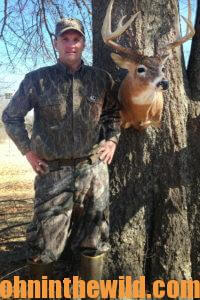
One tip that’s helped me that may help you is that when I know I have a variable wind, then I don’t go to my stand site as early as I normally will. For instance, if I know the deer are probably moving just before dark, then instead of going to my stand site at 2:00 pm, I only may go to my stand site two hours before dark. In other words, try not get in your stand until maybe an hour or 1-1/2 hours before you expect the deer to move. Generally late in the afternoon or just at first light is when you’ll have the most-constant wind of the day.
When hunting a big green field with trees out in its middle, I’ll hunt from the trees in the middle of the green field, out in the open. I’ll get high in a tree, so that the wind will scatter my odor over a longer distance than if I’m sitting in the woods where the trees will block some of the wind and cause my scent to be closer to the ground and linger longer.
Another tip that will help you learn when, how and where the deer are bedding, especially during the early season, is to talk to the deer processor whose business is close to where you hunt. Because I own a deer-processing business where successful hunters bring their deer to be processed, I hear from numbers of hunters what the deer are doing almost every day of the season. On the days that we get numbers of deer to process, I know that the deer are moving a lot. On the days we don’t get many deer to process, I realize the deer aren’t moving very much. The worst day every year that we have for taking in deer to process is the day of the Alabama/Auburn football game, which is a huge rivalry in my state, especially if the game is starting at 12:00 noon or 1:00 pm. If there’s a 3:00 or 7:00 pm start for the football game, we usually take in a good number of deer in the morning, but won’t see any deer or any hunters that afternoon.
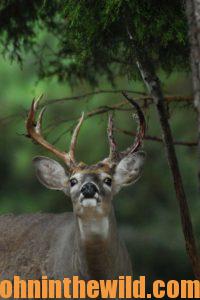
In my early-season scouting, I always notice the temperatures and whether I see scrapes and rubs on the edges of agricultural fields, woods roads and clear-cuts. Then I can decide possibly whether we’ll have an early winter. If the weather’s cooler, deer hunting will get better. Usually, we see the most and biggest bucks the last two weeks in January until February 10. Alabama has a late rut in February in some sections of the state and permits February deer hunting. So, we get a big influx of hunters from all over the country coming to Alabama to hunt our February rut.
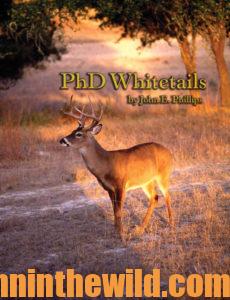 To learn more about hunting for deer, check out John E. Phillips’ deer-hunting book, “PhD Whitetails: How to Hunt and Take the Smartest Deer on Any Property,” available in Kindle and print at http://amzn.to/WIEUoo and Audible at https://www.audible.com/. You may have to copy and paste this link into your browser. (When you click on this book, notice on the left where Amazon says you can read 10% of the book for free). On the right side of the page and below the offer for a free Audible trial, you can click on Buy the Audible book. To see more of John’s deer hunting books, visit www.amazon.com/author/johnephillips.
To learn more about hunting for deer, check out John E. Phillips’ deer-hunting book, “PhD Whitetails: How to Hunt and Take the Smartest Deer on Any Property,” available in Kindle and print at http://amzn.to/WIEUoo and Audible at https://www.audible.com/. You may have to copy and paste this link into your browser. (When you click on this book, notice on the left where Amazon says you can read 10% of the book for free). On the right side of the page and below the offer for a free Audible trial, you can click on Buy the Audible book. To see more of John’s deer hunting books, visit www.amazon.com/author/johnephillips.

